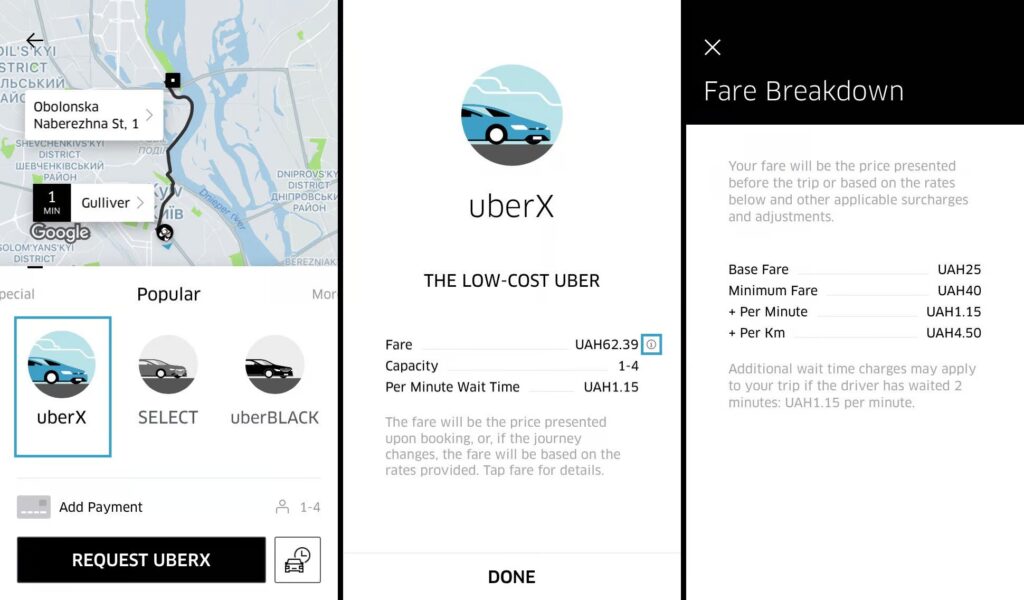With the advent of ride-hailing services like Uber, getting from point A to point B has become more convenient than ever. However, before you hit that request button, a common question lingers: “How much is this ride going to cost me?” In this article, we’re here to demystify the factors that influence Uber’s pricing, how to get an estimate for your ride, and the intricacies of surge pricing.

Uber Price: What Determines It?
The cost of your Uber ride is not just a random number. It’s the result of a complex equation involving various variables:
- Fare Estimate: Uber’s algorithm calculates the fare based on the distance you’ll travel, the expected duration of the ride, and additional fees that might apply.
- Cost of Ride: The type of Uber service you select directly impacts the fare. Premium services like Uber Black or UberXL come with a higher price due to their enhanced features and offerings.
- Distance: As expected, the distance between your pickup and drop-off locations is a major component of the fare calculation. Longer distances translate to higher fares.
- Time of Day: Time plays a role too. During peak hours when everyone seems to need a ride, prices might be adjusted upwards due to increased demand.
- Surge Pricing: The dreaded surge pricing is perhaps the most discussed aspect of Uber’s fare structure. During times of high demand, such as rush hour or after a big event, fares can spike considerably.
How to Get an Estimate
Before you commit to booking, getting an estimate for your Uber ride is a breeze:
- Launch the App: Fire up the Uber app on your smartphone.
- Enter Your Destinations: Enter your intended pickup and drop-off locations within the app.
- View Your Estimate: The app will promptly provide you with an estimated fare before you finalize your booking. This estimate factors in the distance, estimated time, and any ongoing surge pricing.
Understanding Surge Pricing
Surge pricing is like the supply-and-demand law of ride-hailing. When demand for rides surpasses the number of available drivers, surge pricing comes into play. Fares may increase by a multiple (like 1.5x or 2x) of the regular fare. This dynamic pricing strategy helps balance the demand-supply equation.

| Uber Estimate Cost | |
| Fare Estimate | Approximate cost provided before booking |
| Cost of Ride | Actual price you’ll pay for the Uber ride |
| Distance | Length of the route between pickup and drop-off |
| Time of Day | Different pricing during peak and off-peak hours |
| Surge Pricing | Increased fares during high-demand periods |
| Factors | Traffic, route, ride type, local rates, and more |
| Payment Method | Credit/debit cards, in-app payment |
| Cancellation Fee | Charge for cancelling after a certain time |
| Promotions | Discounts, promo codes, special offers |
| Currency | Currency of the region/country where you’re riding |
| Additional Charges | Tolls, taxes, fees, and other applicable charges |
| Transparency | Fare breakdown provided in the app |
Uber’s pricing isn’t just a mystery; it’s a calculated process that takes into account distance, time, and demand fluctuations. Knowing how the fares are calculated empowers you to make well-informed decisions. Next time you’re ready to hop in an Uber, you’ll be armed with the knowledge to estimate your fare and understand surge pricing. Your Uber experience is now not only convenient but also cost-aware.



